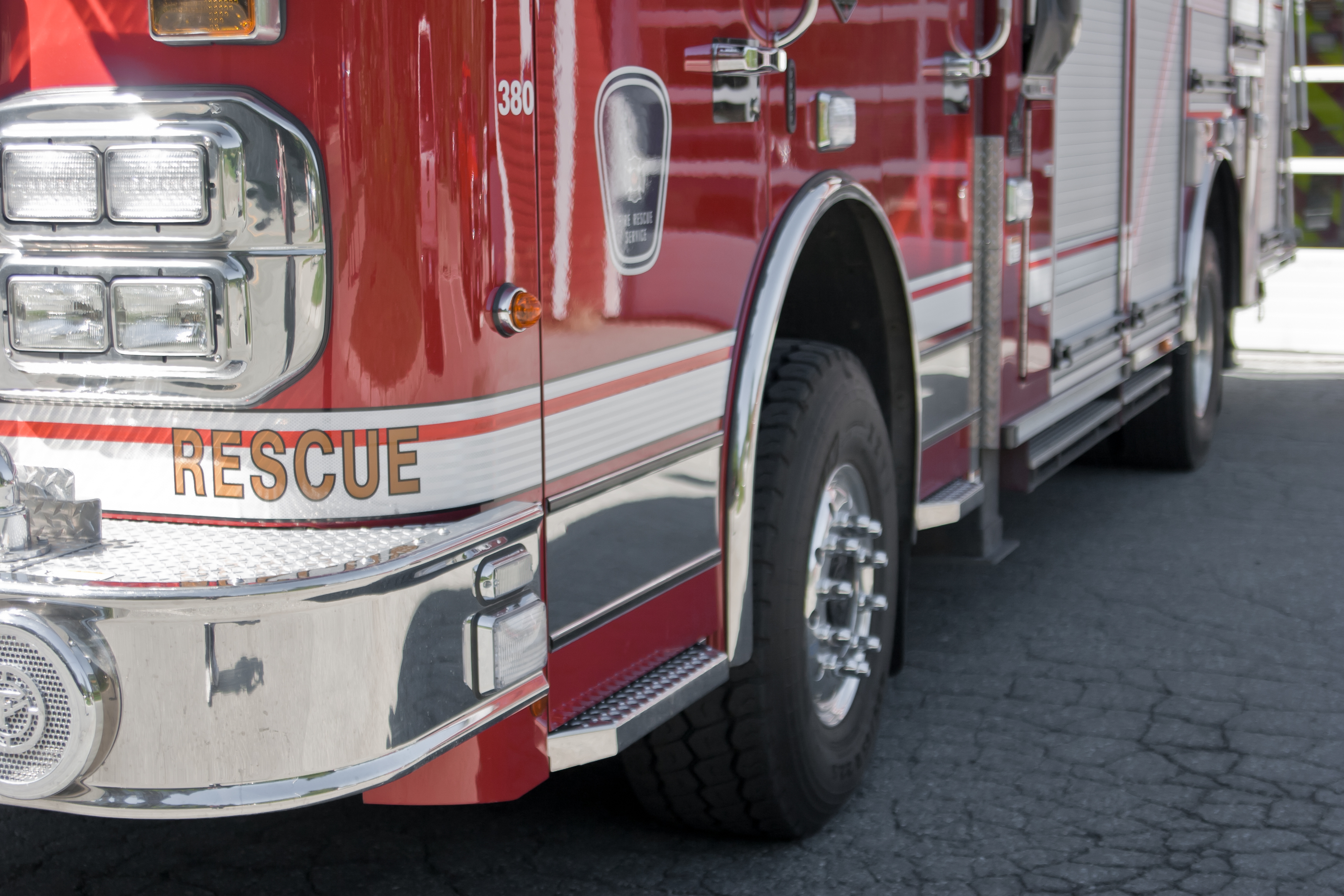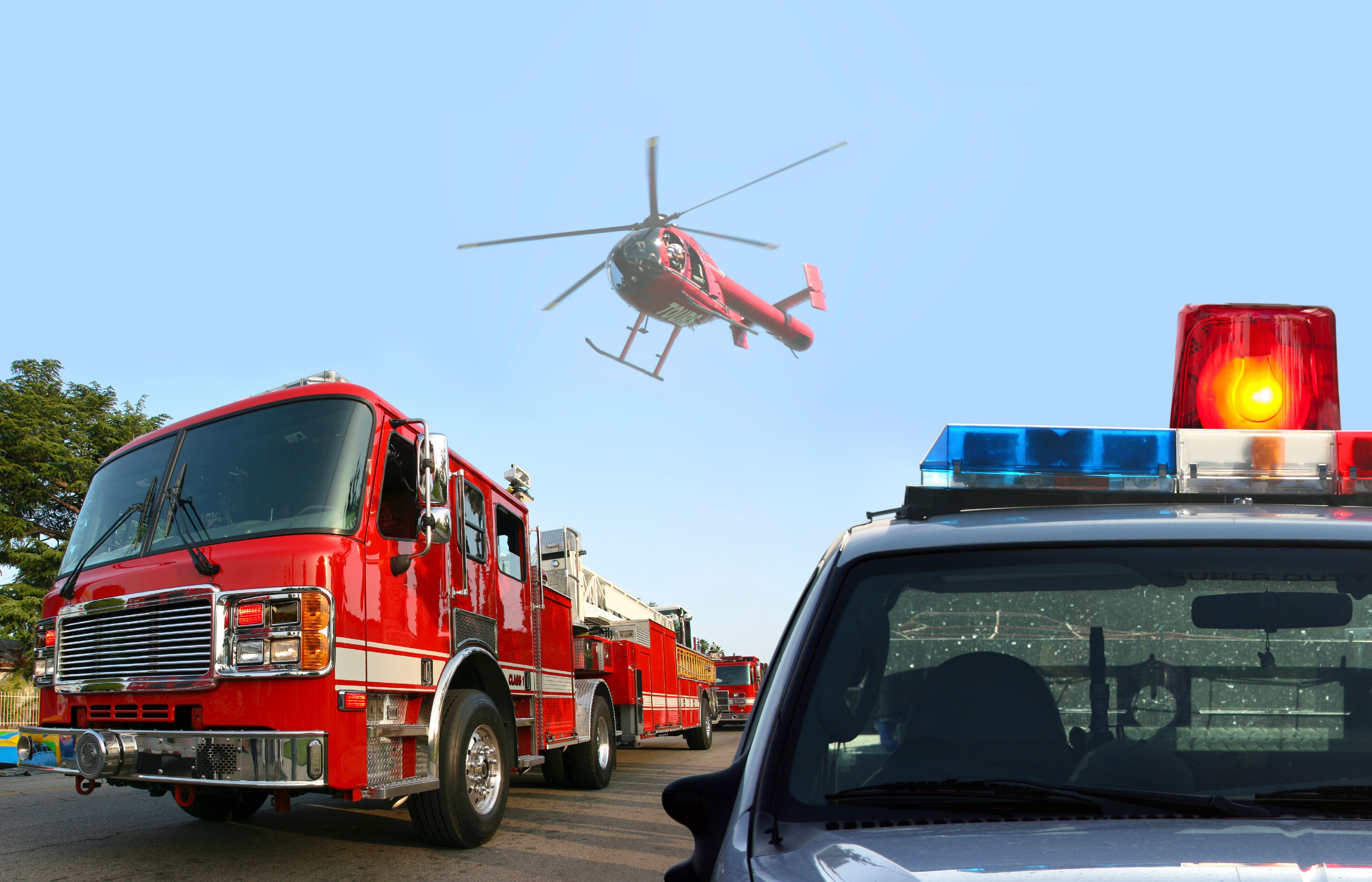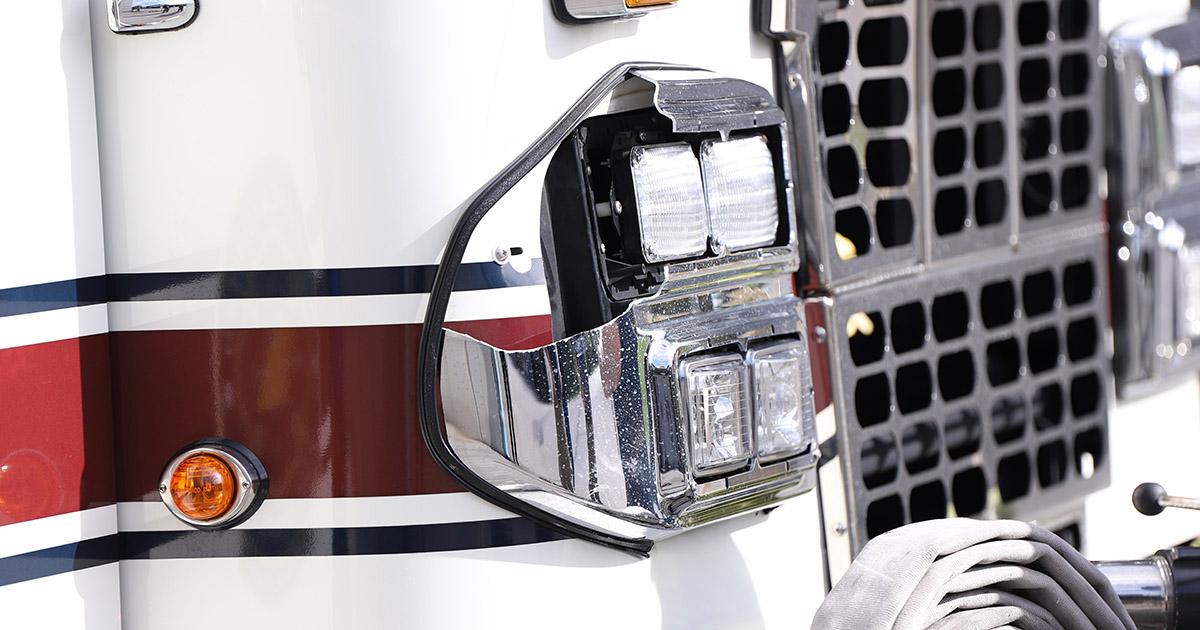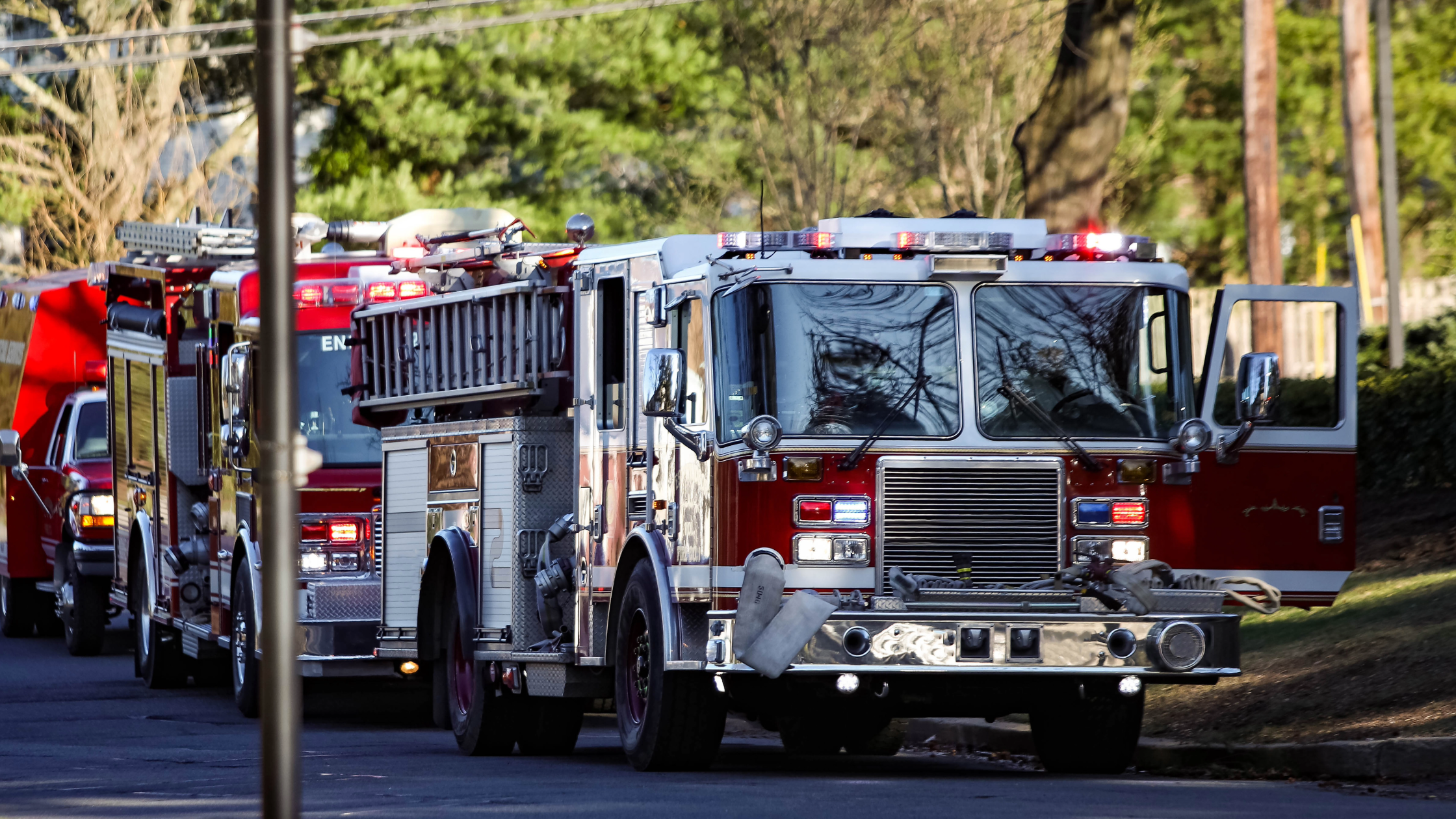A look into roadway dangers that responders face, the costs and possible solutions
Firefighters, police officers and other first responders navigate busy highways and roads every day to respond to car accidents, 911 calls, active fires, crime scenes and other emergencies. Although most Americans understand that firefighters and police officers face danger as a daily part of their jobs, many aren’t aware of how much danger they face just from other drivers. The danger doesn’t stop when they reach their destination, either.
An average of 12,200 roadway responses occur every day in the United States, and at each of these stops, emergency responders are constantly faced with the potential of other drivers hitting, clipping or colliding into them as they drive by. These collisions result in increased risk and significant costs to responders, insurers and the broader public – and more than money is lost.
How many first responders are hit, injured or killed on the roadways each year?
Surprisingly, there isn’t much reliable data on just how many collisions like this occur between American drivers and emergency responders, or the full-scale of the cost to the public. No comprehensive national study has ever been conducted to assess the total impact. But we know enough from existing studies to understand that this is an extremely persistent, fatal and expensive problem that our country hasn’t yet solved.
The statistics for firefighters alone are staggering:
- Firetruck accidents rank as the second leading cause of on-the-job deaths for firefighters.
- In 2017 alone, 15,145 fire department vehicles were involved in collisions nationwide, leading to 1,080 injury incidents and 18 deaths, including 10 cases of firefighters being directly struck by other vehicles.
- Up to 25% of annual line-of-duty firefighter fatalities are attributable to motor vehicle crashes and collisions.
- Traffic accidents are deadlier to firefighters than smoke, flames and building collapses; only heart attacks from overexertion are more fatal.
- Approximately 500 firefighters are involved in fatal firetruck crashes every year; on average, 1 in 100 of those occupants die as a result of the crash.

Although not as much public data exists for police collisions, the statistics are just as concerning for law enforcement professionals:
- Vehicle-related incidents are the single largest cause of law enforcement deaths nationally.
- Between 2006 and 2016, more than one police officer per week was killed on average from a collision or from being struck directly by another vehicle.
- 53% of law enforcement work-related deaths between 2000 and 2008 were attributed to vehicle crashes.
- At least 490 police officers died in car crashes or from struck-by incidents between 2008 and 2017.
Firefighters and police officers aren’t the only work zone professionals in the line of danger, either:
- More than 10,000 ambulance-related collisions occur annually; from 1993 to 2010, approximately 97 EMS technicians were killed in collisions.
- In work zones, more than 100 workers die annually, with nearly a quarter being struck by or run over by non-construction vehicles.
- Towing operators lose about 40 to 50 operators annually, with 75% involving struck-by incidents.
Altogether, the traffic-related fatality rates for law enforcement officers, firefighters and EMS technicians are estimated to be as much as 4.8 times higher than the national average among all occupations.
The costs of driver accidents involving first responders
Tragically, we’ve seen some recent heartbreaking reminders of just how damaging and persistent this problem is:
- In the first four months of 2019, a total of 16 emergency responders were struck and killed by vehicles.
- Further, in just the first three months of this year, 17 Illinois State Police troopers have been involved in incidents in which a person struck them or their vehicle, leading to three deaths.
This February, the International Association of Fire Chiefs (IAFC) issued a National Emergency Safety and Survival Alert in response to the near-daily occurrence of responders being struck on roadways. IAFC President Chief Dan Eggleston noted, “Firefighters are more at risk now than ever before, and unfortunately, numerous recent crashes back that up.” The cost of injured and lost emergency responders to collisions and struck-by incidents is nearly incalculable, but likely reaches billions of dollars on an annual basis. The average comprehensive cost for a fatal collision involving a regular citizen is more than $11 million dollars, but first responder collisions and deaths are much more costly for a number of reasons.
- Fire trucks can cost more than $2 million to replace.
- Emergency vehicle collisions often result in lawsuits that can incur settlements reaching millions of dollars in city and municipal costs and insurance payouts.
- Disability for injured emergency responders, training costs for new recruits, overtime pay to cover recovering responders, costs of operating reserve apparatus and additional expenses related to collisions and struck-by incidents all contribute to the additional cost of these incidents.
They also dramatically increase the risk of additional unrelated costs and impacts to communities. For instance, when critical officers and firefighters are off the job because of on-the-job injuries, departments and crews are left short-staffed. Most average American cities don’t have a deep inventory of backup ladder trucks and pumpers, so when equipment is damaged, departments must either borrow trucks and equipment from other cities or run older reserve apparatuses. In addition, short-staffed departments must reassign their remaining staff and equipment to cover even larger response areas, and less experienced firefighters may be asked to fill the driver position. Altogether, a single serious or fatal collision with an emergency responder can create a ripple effect of cost and risk that impacts responders, departments, communities, insurance providers and the public at large.
Working toward solutions
Elected officials have fought to address this problem for years. Beginning in 2002, a national campaign was launched to put “Move Over” laws in place in states across the country. The purpose of these laws is simple: drivers who see an emergency vehicle pulled over and actively engaged in a response are required to move over into another lane or otherwise give space to the emergency vehicles where possible. Today, these laws are active in all 50 states, and the public is broadly familiar with them. 67% of drivers in a recent survey reported having heard of “Move Over” laws, and 73% say they do move over when they see an emergency vehicle stopped on the side of the road with its lights on. However, work still remains to improve compliance.
Efforts to increase awareness and safety include:
- In Illinois, State Troopers stepped up enforcement of “Move Over” laws as a direct response to the recent spike in struck-by incidents and collisions.
- Children of law enforcement officers are even starting public awareness campaigns on social media to draw attention to the problem and remind drivers that the roads are work zones for police officers, firefighters and many other professional emergency responders.
- Emergency vehicle lights and sirens have also grown more sophisticated and can utilize LEDs, flash patterns, and other programmable features designed to increase the likelihood of alerting other drivers. Today, manufacturers are creating sirens with louder noises, different patterns, brighter lights, dimmer lights, and even more variations.
Despite these efforts, however, the statistics remain steady and consistent. In response, the industry is looking to a new frontier in the realm of emergency responder technology that has even more potential to address this problem.
Advancing technology for first responder safety
Other methods of driver signaling, such as Digital Alerting using vehicle communication technologies, are in deployment, cost-effective and available today. Digital Alerting is an “in addition to” technology; it isn’t meant to replace lights and sirens, but is the next evolution in how public safety professionals could communicate to drivers on the road.
Advance warning systems, which are designed to alert drivers as they near or approach emergency vehicles and roadside hazards, have been shown to significantly reduce reaction time to lights and sirens, improve braking control and increase safety margins between drivers and emergency responder vehicles. One pilot study at the University of Minnesota found AWD systems to lower the odds of a crash between 60% and 90%; this is the only study with results this high for a particular solution, demonstrating the promise and potential of Digital Alerting. Just as seatbelt reminder chimes were demonstrated to increase seatbelt compliance, experts believe that digital alerts could help to close the gap in “Move Over” compliance and help to avert costly and fatal collisions.
A community effort
First responder and roadway safety shouldn’t only be a concern for responders and their families. As citizens depend on these people to help protect their families, community and home – it’s time that their safety becomes a priority. Everyone can help by spreading the word about the threats that our first responders are facing, talking about the dangers of distracted driving and leading by example.

Cory Hohs
Cory is the CEO of HAAS Alert, a safety service for first responders and government fleets that helps prevent collision through embedded navigation and automotive digital alerting. He brings more than a decade of experience in engineering and product management and has worked with spatial navigation systems for automotive and mobile technologies at NAVTEQ/HERE Maps. Cory has been working in the connected car and autonomous vehicle space since 2015 and serves on multiple public safety standards organizations. To date, HAAS Alert has delivered 30,000,000 driver alerts and is live in over 80 cities. The service comes standard on multiple fleet manufacturers and is engaged in active public safety vehicle communication projects with the Department of Homeland Security, NHTSA, and State DOTs.
DISCLAIMER
The information contained in this blog post is intended for educational purposes only and is not intended to replace expert advice in connection with the topics presented. Glatfelter specifically disclaims any liability for any act or omission by any person or entity in connection with the preparation, use or implementation of plans, principles, concepts or information contained in this publication.
Glatfelter does not make any representation or warranty, expressed or implied, with respect to the results obtained by the use, adherence or implementation of the material contained in this publication. The implementation of the plans, principles, concepts or materials contained in this publication is not a guarantee that you will achieve a certain desired result. It is strongly recommended that you consult with a professional advisor, architect or other expert prior to the implementation of plans, principles, concepts or materials contained in this publication.
This blog post may contain the content of third parties and links to third party websites. Third party content and websites are owned and operated by an independent party over which Glatfelter has no control. Glatfelter makes no representation, warranty, or guarantee as to the accuracy, completeness, timeliness or reliability of any third party content. References to third party services, processes, products, or other information does not constitute or imply any endorsement, sponsorship or recommendation by Glatfelter, unless expressly stated otherwise.
Related posts
We asked 10 members of our VFIS Team to name one auto-related risk that they believe is underdiscussed in fire and EMS agencies. Here’s what they said.
Most volunteer fire departments rely heavily on POVs, but there are inherent risks you should know.
Establish a Emergency Vehicle Operations Program that includes driver/operator requirements to help ensure your vehicles are in the right hands.








Submit a Comment